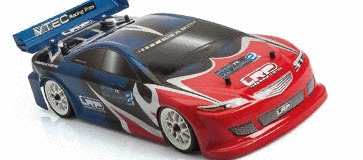 Garett, la 03 October 2016 - 08:14 AM, a spus:
Garett, la 03 October 2016 - 08:14 AM, a spus:
Ca tot isi punea lumea speranta in EASA:
http://droneinsider....drone-industry/
Ce imi e dracu' AACR, ce imi e tat-su EASA! :angry:
Acum, pe bune, chiar tot ce tine de reglementari aeronautice pe lumea asta pare populat exclusiv de imbecili patologici care realmente n-au habar pe ce lume traiesc! :huh:
Un mic rezumat.
1. Pagina oficiala se poate gasi la
https://www.easa.eur...vil-drones-rpas
2. Nota explicativa cu referire la ‘Prototype’ Commission Regulation on Unmanned Aircraft Operations"
https://www.easa.eur...ion%20final.pdf
Justificarea de ce nu au scos aeromodelul "model aircraft" din UA
"Article 15 provides the transitional provisions for recreational operations of UA in the frame of associations or clubs
(‘model aircraft’ operations).It is proposed that they can continue to operate as of today in accordance with National
regulations or practices. After 3 years after the entry into force of the regulation an authorisation shall be issued by
the national authorities to associations or clubs taking into account their safety record and defining limitations and
deviations to the subpart B. No risk analysis will be necessary as the idea is that the safety record, the procedures, the
safety culture of the associations and clubs provide an equivalent safety level.
‘Model aircraft’ are not defined but are covered by the reference to leisure flights, air displays, sport or competition
activities.
The reference to associations or clubs has been made because they have a structure, procedures and safety culture that
created good safety record.
This also means that individual hobbyist should either comply with the rules or join an association or club.
The option of excluding ‘model aircraft’ was seriously envisaged taking into account their good safety record. We
had several attempts to make a definition that could accurately separate classical ‘model aircraft’ from unmanned
aircraft. This has proven difficult as a ‘model aircraft’ is indeed an unmanned aircraft, and the variety of model aircraft
goes far beyond manually controlled fixed wing aircraft. As we could not identify a satisfactory definition, the option
of a transition period combined with an authorisation taking into account the good safety record has been adopted.
In
our reflexions, we also took into account that the official Fédération Aéronautique Internationale policy is to attract
unmanned aircraft hobbyists. This will allow hobbyists to benefit from the experience of ‘model aircraft’ associations
and clubs. Other reasons to keeping ‘model aircraft’ under the prototype rules are as follows:
Excluding ‘model aircraft’ from these prototype rules would allow operators to declare their UA as a model
and escape to the requirements, therefore opening a safety gap. It must be kept in mind that a significant
number of incidents are caused by UA operated non-commercially;
Member States would have to develop rules for ‘model aircraft’. Not all have such rules. They would have
to provide a definition of ‘model aircraft’ which, as explained above, is not an easy task;
The approach being to consider the risk of the operation, being it commercial or non-commercial, excluding
‘model aircraft’ may not be in line with this principle.
Note 1 concerning articles 14 and 15: The dates have taken notably into account a finding coming from the survey
conducted by the EASA geofencing task force that indicates that the majority of the small unmanned aircraft have a
production life of around two years.
Note 2 concerning product requirements: It is acknowledged that some requirements proposed in the appendices to
Annex I may be difficult to comply with by mass produced ‘model aircraft’, and therefore deeper consultation with
stakeholders will be organised to solve this issue"
3. Prototype’ Commission Regulation on Unmanned Aircraft Operations"
https://www.easa.eur...ion%20final.pdf
"Article 15
Transitional provisions
For recreational operations of UA, such as leisure flights, air displays, sport or competition activities,
conducted in the frame of associations or clubs with proven satisfactory safety records and performed
under national systems before this Regulation enters into force, the following transitional provisions
shall apply:
1. By [3 years after entry into force of this Regulation — estimate 2020], the competent authority
shall issue operational authorisations to associations or clubs for the operations which would
otherwise require an authorisation according to Subpart B of Annex I to this Regulation.
2. An operational authorisation can be issued without the need to conduct the operational risk
assessment referred to in UAS.SPEC.60.
3. Operational authorisations issued under this Article shall define the conditions, limitations and
deviations from the requirements of Subpart B of Annex I to this Regulation. "
Nu suna bine deloc :( dezamagire totala ...din pacate nu pot injura aici dar cei care au facut acel doc spre sa fi auzit ce le-am transmis
Aceasta postare a fost editata de Andrix_y: 03 October 2016 - 04:10 PM
 avy, la 26 September 2016 - 08:37 AM, a spus:
avy, la 26 September 2016 - 08:37 AM, a spus: 
 Ajutor
Ajutor



 Acest topic e inchis
Acest topic e inchis



















